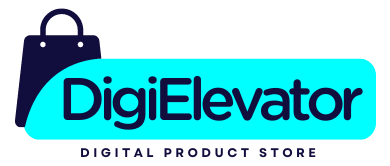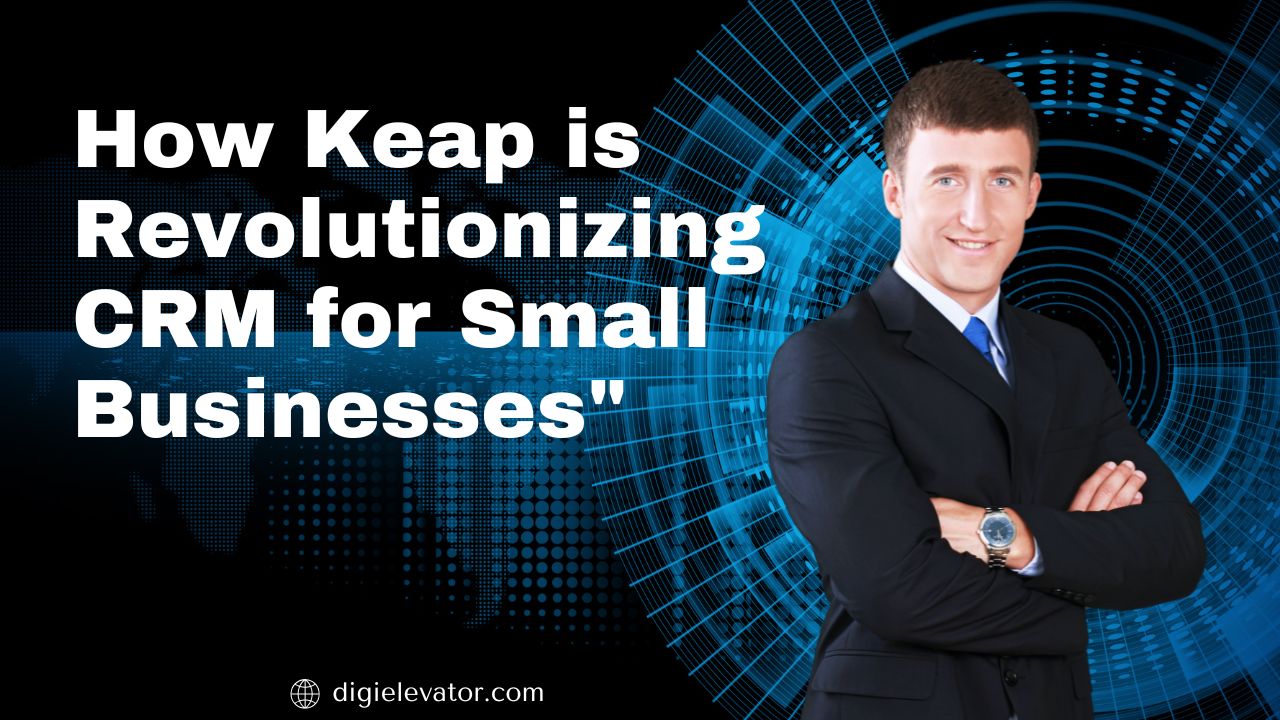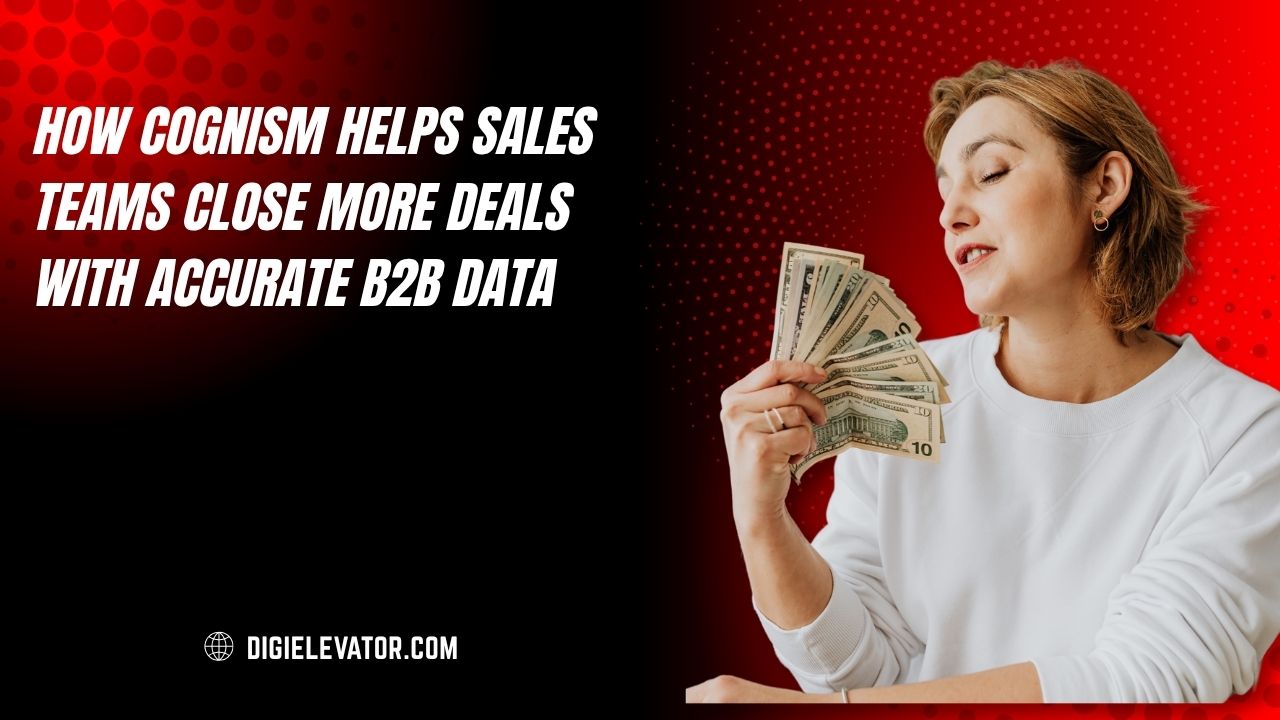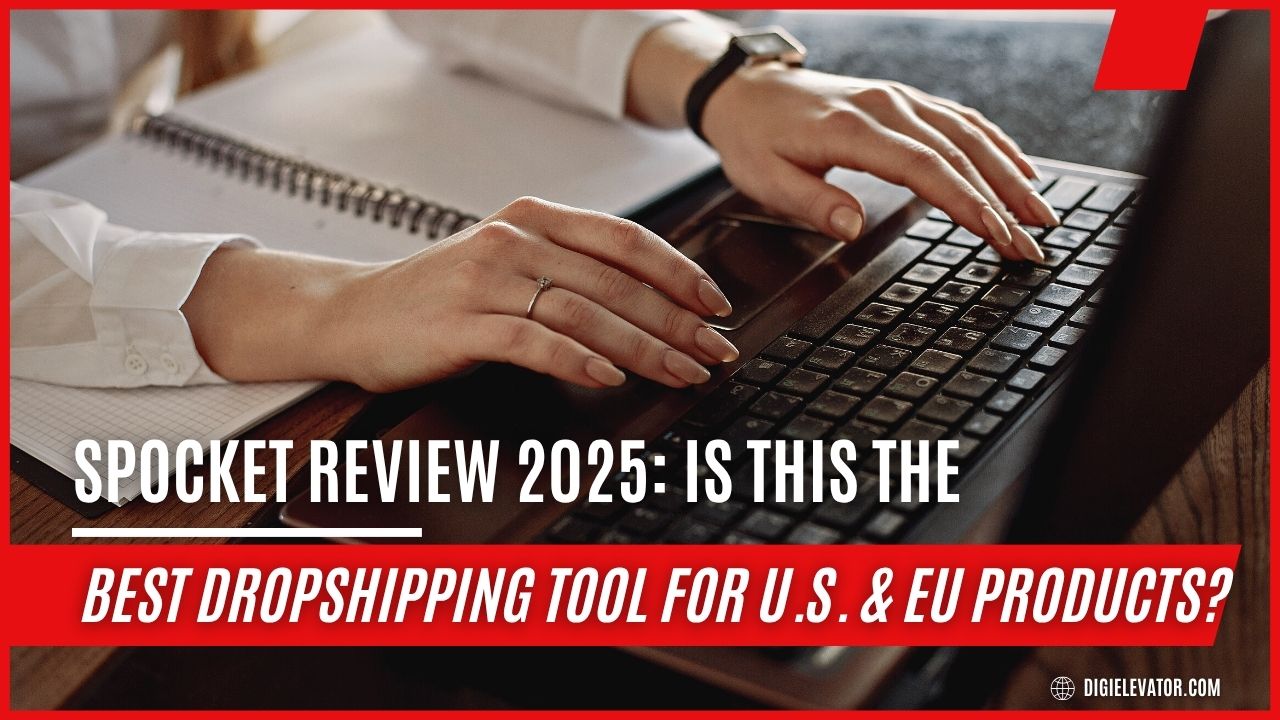Discover how Apollo.io helps businesses scale cold email campaigns effectively. Learn how its powerful data filters, personalization tools, and automation features make outreach smarter, improve deliverability, and boost reply rates.
Table of Contents
- Introduction
- What Is Apollo.io?
- Building a Quality Prospect List
- Verified Data & Email Discovery
- Personalization at Scale
- Sequence Automation That Feels Human
- Deliverability Foundations
- A/B Testing & Optimization
- Analytics & Reporting
- Integrations & Workflow Orchestration
- Playbooks You Can Copy
- Common Pitfalls (and How Apollo.io Helps)
- Pricing, ROI, and When to Upgrade
- Step-by-Step Launch Plan (14 Days)
- Conclusion
- FAQs
Introduction
Cold email still works—when you pair smart strategy with the right toolset. The tricky part is scale. You need accurate data, tight personalization, clean sending infrastructure, and the ability to iterate fast.If you do it by hand, you will reach a ceiling. Do it with clunky tools and you burn domains. That’s the gap Apollo.io fills: one place to find prospects, personalize, send, measure, and improve—without juggling five different platforms.
Why scaling cold email is hard
Deliverability problems, generic copy, poor data, and no feedback loops are the main causes of scaling failures.You send more but don’t learn faster. Even worse, you watch responses stagnate and harm the reputation of your site.
Where tools like Apollo.io fit
Apollo.io integrates a sales engagement engine with a sizable B2B contact database.You can build hyper-targeted lists, run multi-step sequences, and sync outcomes directly to your CRM. Less friction, more signals, tighter control.
What Is Apollo.io?
Apollo.io is a B2B growth platform that blends prospecting data with outbound automation. Instead of exporting CSVs to a separate email tool, you research, enrich, sequence, and analyze inside one workflow. It’s designed for SDR teams, founder-led sellers, agencies, and anyone who needs repeatable pipeline from cold outreach.
Data + Engagement in one platform
Think of it as both your address book and your mailroom. You search the database, apply filters aligned to your ideal customer profile (ICP), verify contacts, and drop leads into sequences—then monitor deliverability, replies, and meetings booked.
Who should use it (ICP fit)
- Early-stage SaaS founders validating markets
- Growth-stage sales teams building SDR engines
- Agencies running lead-gen for multiple clients
- B2B service providers targeting specific verticals
Building a Quality Prospect List
Your list is the bedrock. Here, Apollo.io excels thanks to granular filters that go beyond “title” and “industry.”
Deep filters to match your ICP
Filter by headcount, funding stage, revenue bands, technologies used, location, seniority, function, keywords in job titles, hiring velocity, and more. To separate buying committees from random contacts, use stack filters.
Firmographic, technographic, and job-change signals
Firmographics tell you company fit. Technographics reveal tool stacks (“uses Shopify”, “uses AWS”, “uses HubSpot”). Job-change signals help you reach newly-promoted buyers who are likely to make moves. Combined, you’re not just blasting—you’re matching context.
Practical examples of filters that convert
- SaaS Security Tool: Companies 200–1,000 employees, “CISO” or “Security Lead”, tech stack includes AWS, compliance keywords (SOC 2, ISO 27001), North America/EU.
- Shopify App Agency: E-commerce, Shopify technology detected, 2–20 employees, growing headcount, marketing titles (Head of Growth, Retention).
- Fintech data consulting firm with 50–500 workers; job postings use terms like “Snowflake” or “dbt,” and titles include “Data Engineering Manager.”
Verified Data & Email Discovery
Great sequences die if emails bounce. Apollo.io’s email discovery and verification save you from sending into the void.
Email finding and verification workflow
From a company or person profile, you can reveal verified email formats, discover direct emails, and test deliverability status before sending. Verified or high-confidence emails go straight to your lists; risky ones can be held for manual review.
Handling duplicates and data hygiene
Use Apollo.io’s deduplication and merge logic so you don’t hit the same person twice from two sequences. Keep your suppression lists tight: competitors, partners, and past unsubscribes shouldn’t reappear.
Personalization at Scale

You don’t have to choose between “hand-crafted” and “spammy.” Apollo.io helps you template the structure while keeping the content personal.
Dynamic fields, snippets, and templates
Insert dynamic variables (first name, company, role, tech used, recent funding) into templates. Save reusable excerpts, such as “pain points by persona” or “case study lines,” and combine them for each part.The result is quick customization, not copy-paste monotony.
Research shortcuts without losing the human touch
Open a contact’s profile, scan recent updates, and pull one relevant detail into line one. One crisp sentence of context often doubles reply rates.To prevent tab-hopping, Apollo.io keeps essential details close at hand.
3 personalization tiers for speed vs. depth
- Tier 1 (1:Many): Only variables + segment-specific value prop. Fastest for top-of-funnel.
- Tier 2 (1:Few): Add a custom opener from a quick profile skim (15–30 seconds each).
- Tier 3 (1:1): Full research for “dream accounts,” incorporating recent news, product stack, or hiring signals.
Sequence Automation That Feels Human
Automation should look like thoughtful follow-through, not a spam cannon.
Step types (emails, tasks, calls, LinkedIn)
Build cadences that include emails plus manual touchpoints: call tasks, social touches, even custom tasks like “record a 45-second Loom.” Apollo.io lets you order steps logically and branch based on replies or outcomes.
Send windows, time zones, and throttling
To maintain a positive reputation, set sending windows for each region (such as 9:30–11:30 local time) and limit daily volumes.Randomize delays so 200 emails don’t land at precisely 10:00 a.m.
Cadence blueprints for different buyer personas
- Technical Leader (6 touches / 12 days): Value + use case, light jargon, quick proof, then ROI angle.
- Marketing Leader (7 touches / 16 days): Social proof forward, short case stats, a visual asset, then calendar CTA.
- Founder/Owner (5 touches / 10 days): Hyper-concise, pain-first, one-liner proof, direct ask.
Latest Post
Deliverability Foundations
If your messages don’t land, nothing else matters.
Domain setup: SPF, DKIM, DMARC & tracking
Authenticate your sending domain (SPF/DKIM) and enforce DMARC alignment. Use a custom tracking domain to align links with your brand. Test before scaling. Keep marketing blasts separate from sales mailboxes to compartmentalize risk.
Volume ramping, randomization, and reply-first logic
Start small (dozens per mailbox per day), then increase gradually while monitoring bounce and spam complaint rates. Favor short, plain-text messages with a single link (or none). Reply to your own thread (“bumping this”) sparingly; better to add value in each follow-up.
Avoiding spam triggers with copy best practices
- Use natural language—no “‼️ LIMITED OFFER ‼️”.
- Keep links minimal; avoid link shorteners.
- Trim heavy signatures and big images.
- Offer a real, easy opt-out line.
A/B Testing & Optimization

What gets measured gets better—fast.
Subject lines, CTAs, and length experiments
Test curiosity vs. clarity, soft vs. direct CTAs (“open to a quick chat?” vs. “worth a 12-min call next week?”), and tight 3–5 sentence bodies vs. slightly longer narratives. Let tests run to statistical significance; don’t call winners after 30 sends.
Interpreting opens vs. replies vs. positive replies
Opens show deliverability and subject quality. Replies measure resonance.Revenue potential is measured by positive responses (booking, interest, recommendation). Optimize in that order. Apollo.io’s outcome tagging makes this easy.
Analytics & Reporting
Apollo.io’s dashboards help you move from guessing to knowing.
Team dashboards and cohort views
View performance by rep, persona, industry, or sequence. Track how first-touch open rates correlate with booked meetings. If one rep’s positive-reply rate is 2×, examine their templates and timings.
Using outcome tags to learn what actually works
Tag replies as “Interested,” “Not Now,” “Referral,” “Wrong Person,” etc. Over time you’ll see patterns: certain segments love ROI angles; others respond to integration speed. Feed those insights back into copy and targeting.
Integrations & Workflow Orchestration
No outreach lives in a vacuum.
CRM sync (HubSpot, Salesforce)
Sync contacts, companies, and activities so marketing, sales, and success stay aligned. Trigger lifecycle stages or pipelines based on Apollo.io events (e.g., “Positive Reply → Create Opportunity”).
Read More:-
How Dealfront Finland Oy Helps You Identify Ideal Customers
LearnWorlds Review: Best Features for Online Course Creators
How Later Helps You Manage Multiple Social Accounts
Exploring DesignCap and FlexClip by PearlMountain Limited
Sonetel: Affordable Virtual Phone Numbers for Small Businesses
Enrichment, webhooks, and Zapier-style automations
Enrich inbound demo requests with Apollo.io data. Fire webhooks when someone clicks a key link. Provide Slack with context-rich new leads so that AEs can seize them.
Team Collaboration & Governance
Scaling is a team sport.
Roles, permissions, and templates
Lock down who can edit sequences, manage sending domains, or bulk-export data. Share a library of approved templates so new reps aren’t reinventing the wheel—or causing deliverability fires.
Multi-mailbox sending with safe limits
Connect multiple mailboxes across the team and set per-mailbox caps. Distribute volume so no single sender gets hammered. Keep a clear separation between prospecting and customer success email addresses.
Playbooks You Can Copy
Steal these patterns and adapt.
Founder-led sales for early-stage SaaS
- Build a 250–500 contact pilot list tightly matched to your ICP.
- Use Tier 2 personalization (one custom opener per contact).
- Sequence: 5 touches over 10 days; ask for feedback before the hard meeting ask.
- Track “Interested but Not Now” and set smart re-engagement reminders at 60–90 days.
Agency lead-gen & niche prospecting
- Create verticalized sequences (e.g., “home service franchises” vs. “e-comm skincare”).
- Add a manual task to review each contact’s site for a 1-sentence audit insight.
- Offer a small, tangible win (free teardown video).
- Route positive replies to a shared inbox plus Slack alert.
Channel partner recruiting sequences
- Target CEOs/BD leads at complementary vendors.
- Show a mutual-customer or integration angle.
- CTA: “Worth a 15-minute compatibility chat?”
- Track referred pipeline separately to spotlight partner-sourced revenue.
Common Pitfalls (and How Apollo.io Helps)
Bad data, bloat, and bounce management
Low-quality data inflates outreach but deflates results. Use Apollo.io’s verification, dedupe, and suppression tools. Review bounced domains and excise them fast.
Over-automation and compliance risks
Automate the logistics, not the empathy. Always offer an opt-out. Respect regional regulations and keep records of consent states. Apollo.io’s governance controls and global unsubscribe lists help keep you clean.
Pricing, ROI, and When to Upgrade
Signs you’re outgrowing manual outreach
- You can’t keep up with hand-built lists.
- Reply handling is chaotic.
- You’re blind to which messages fund the pipeline.
Calculating cost-per-meeting and payback
Track total platform + domain + data costs against meetings booked and converted revenue. If a $1,200 monthly stack yields 12 qualified meetings and two deals worth $8,000 each per quarter, your payback is obvious. The visibility you gain is often the biggest ROI.
Step-by-Step Launch Plan (14 Days)
Day-by-day checklist
Day 1–2: Define ICP and value prop. Draft two sequences (persona A/B).
Day 3–4: Configure sending domains (SPF/DKIM/DMARC, tracking domain). Connect mailboxes; set conservative send limits.
Day 5–6: Build your first 400-contact list with strict filters. Verify emails.
Day 7: Create templates with dynamic fields + 1 custom opener per contact (Tier 2).
Day 8: Launch to 50–75 contacts per mailbox. Watch bounce rate and opens.
Day 9: Tag reply outcomes; route “Interested” to calendar links with guardrails (15–20 min slots).
Day 10: On the tenth day, begin A/B testing CTAs and subject lines.
Day 11: Add a call/LinkedIn task to the mid-sequence step.
Day 12: Review analytics: open → reply → positive reply funnel. Kill laggards.
Day 13: Scale volume by 20–30% if metrics are healthy.
Day 14: Retrospective: save winning assets to your template library, adjust ICP filters, and plan the next test.
Metrics to watch from day one
- Bounce rate: Keep it well under industry red flags.
- Open rate: Signals subject and placement health.
- Reply rate: Measures message-market fit.
- Positive reply rate: Measures revenue potential.
Meetings scheduled at every 100 sends: Your pipeline’s north star.
Conclusion
Scaling cold email isn’t about blasting more—it’s about sending smarter. Finding the proper people, quickly crafting context-rich messages, ensuring deliverability, and converting outcomes into repeatable playbooks are all made easier with Apollo.io.With accurate data, human-feeling sequences, and tight analytics, you can grow from a handful of ad-hoc outreaches to a predictable pipeline engine—without torching your domain or your brand.
FAQs
Q: Is Apollo.io only for large sales teams?
A. No. Solo founders and small agencies benefit from the same data and sequencing tools, just with tighter volumes and more selective targeting.
Q: How many emails should I send per day when starting?
A. Begin conservatively—dozens per mailbox—then ramp gradually as you confirm healthy bounce and reply rates.
Q: Can I use Apollo.io for multi-channel outreach beyond email?
A. Yes. Build sequences that include manual tasks, calls, and social touches so your outreach doesn’t feel one-dimensional.
Q: What’s the fastest way to improve reply rates?
A. Tighten your ICP filters and personalize the first sentence with one relevant insight. Then A/B test subject lines and CTAs.
Q: How do I avoid spam folders?
A. Authenticate your domain (SPF/DKIM/DMARC), keep volumes sane, minimize links and images, write like a human, and monitor metrics daily.


















